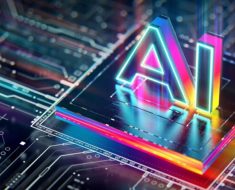Get Email Alerts and Follow Us:
In the ever-evolving landscape of artificial intelligence, the technological marvel known as the Large Language Model (LLM) has taken center stage. These LLMs, such as ChatGPT, have the ability to process and generate human-like text, revolutionizing industries ranging from customer service to content creation. However, the sheer computational power required to build and operate these models comes with an environmental cost. In this article, we’ll delve into the colossal scale of LLMs, their energy consumption, and an innovative solution that tech giant Microsoft is pioneering to address the energy dilemma.
The Mammoth LLM: 1.7 Trillion Parameters and Counting
One of the most astonishing aspects of LLMs like ChatGPT is their staggering scale. These models are rumored to be built upon an astonishing 1.7 trillion parameters. The development of such colossal language models is a monumental undertaking that consumes significant time and resources. However, their true energy footprint becomes apparent when these LLMs are deployed and operated in data centers.
The Hidden Cost: Water and Energy
Data centers, the beating hearts of the digital world, are vital for training and running LLMs. OpenAI, the organization behind ChatGPT, operates data centers in locations like Iowa. The shocking revelation is that these data centers require an immense amount of water for cooling purposes. The demand for water is so significant that Des Moines’ local government issued a directive to OpenAI to reduce energy usage to continue their operations in the area. This underscores the critical nature of energy consumption in the world of AI.
“…The extra water usage was such a burden that the city now stipulates that it will not consider any future data center projects from Microsoft unless the company demonstrates that it has the technology to reduce its peak water usage.” Source: https://www.thestreet.com/technology/chatgpt-environmental-cost-des-moines
Energy Consumption: A Growing Concern
Energy usage has emerged as a critical issue for companies harnessing AI programs within their data centers. Even before the advent of AI, data centers were responsible for approximately 3% of America’s total energy consumption. With AI poised to play an increasingly pivotal role in various sectors, this figure is only expected to rise. Consequently, big tech companies are ardently seeking ways to mitigate energy-related costs.
Microsoft’s Vision: Small Modular Nuclear Reactors (SMRs)
In the quest to tackle the energy challenge posed by AI, Microsoft has devised a groundbreaking solution—small modular nuclear reactors (SMRs). This innovative approach may not be entirely new, but it is undoubtedly bold. Nuclear power is making a resurgence as one of the cleanest and most efficient forms of energy. SMRs, in particular, take nuclear energy to another level of practicality and sustainability.
The Pioneering Advantages of SMRs
SMRs are smaller in scale compared to traditional nuclear reactors, generating around 300 megawatts per unit, which is about a third of the capacity of larger reactors. The key advantage lies in their prefabricated design, making them not only more affordable to construct but also incredibly space-efficient. This is pivotal for data centers, which often operate in densely populated areas where large reactors would be impractical.
The Perfect Marriage: SMRs and AI Power
The integration of SMRs into the energy infrastructure of data centers presents a near-perfect solution to the AI power problem. It addresses the ever-mounting energy costs associated with the development of generative AI, ensuring a sustainable and eco-friendly path forward. Microsoft’s bold move into this space is expected to not only boost AI development but also bring SMRs into the mainstream.
A Flourishing Industry: The SMR Renaissance
The adoption of SMRs by tech giants like Microsoft is a significant catalystA stock catalyst is an engine that will drive your stock either up or down. A catalyst could be news of a new contract, SEC filings, earnings and revenue beats, merger and acquisit… for the burgeoning SMR industry. Currently, there are over 80 different SMR models under development worldwide, each with unique specifications and intended applications. Microsoft’s endorsement could propel this industry into the spotlight, creating high-profile demand for its products.
The AI Revolution: A Profound Economic Impact
As AI becomes supercharged by sustainable nuclear energy solutions like SMRs, the industry is poised to unlock its full potential. Experts project that AI will contribute trillions to the world economy annually, infiltrating nearly every imaginable industry. It’s akin to the personal computer revolution that transformed the world, with AI now occupying a similar transformative role.
Seizing the Opportunity
Investors, take note. The transformative potential of AI is second only to its profit potential. Just as those who invested in personal computer companies witnessed a revolution, today’s opportunity lies in investing in the companies shaping the AI-driven world. The promise of AI is vast, and those who recognize its potential stand to reap substantial rewards.
Bottom-line: The integration of small modular nuclear reactors into the energy infrastructure of data centers heralds a sustainable future for AI. As AI continues to redefine industries and drive economic growth, innovative solutions like SMRs ensure that its progress is not marred by excessive energy consumption. For investors, the time to embrace this transformative technology is now, as AI ventures into uncharted territories, reshaping the world as we know it.
Get Email Alerts and Follow Us:





